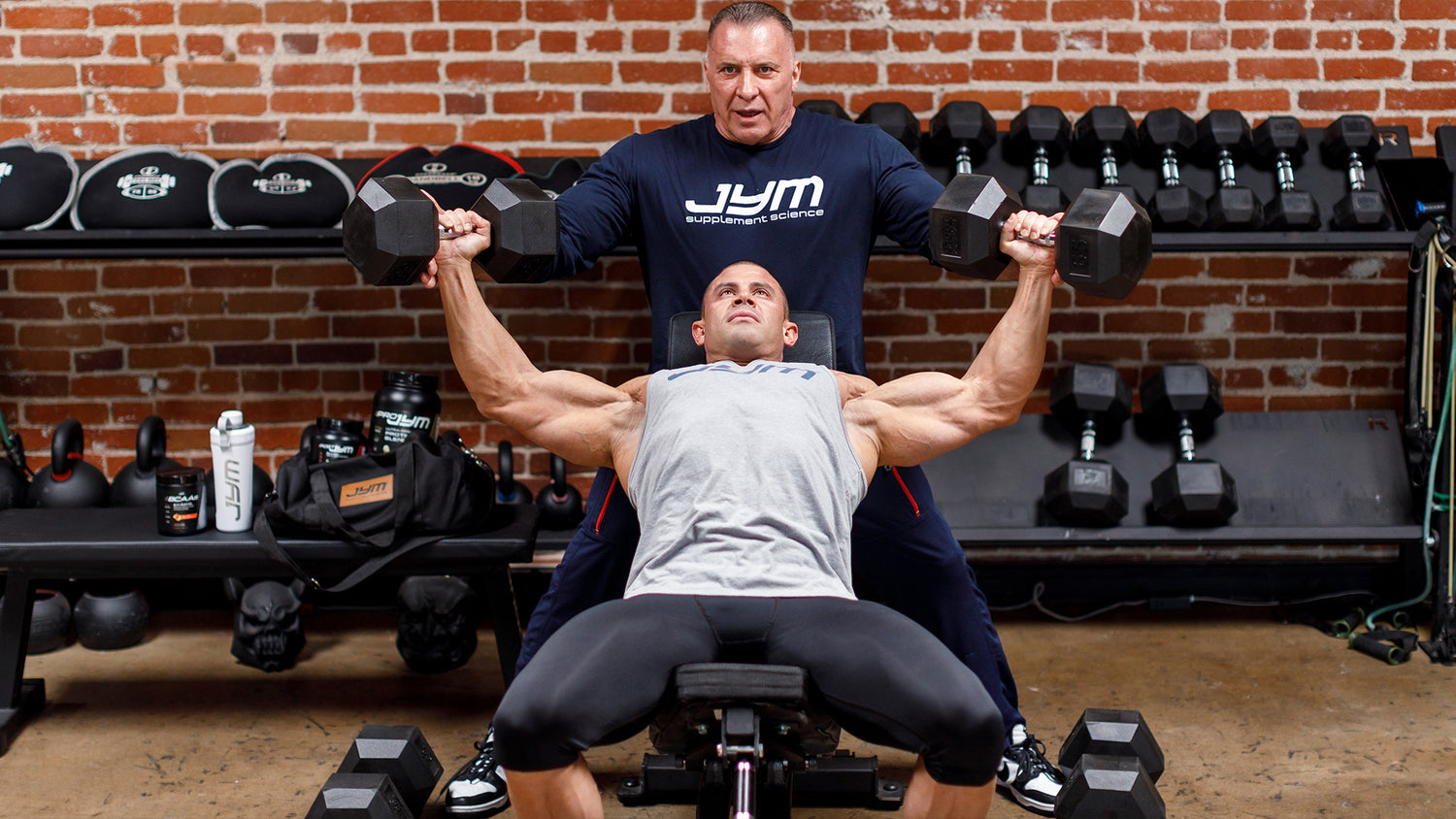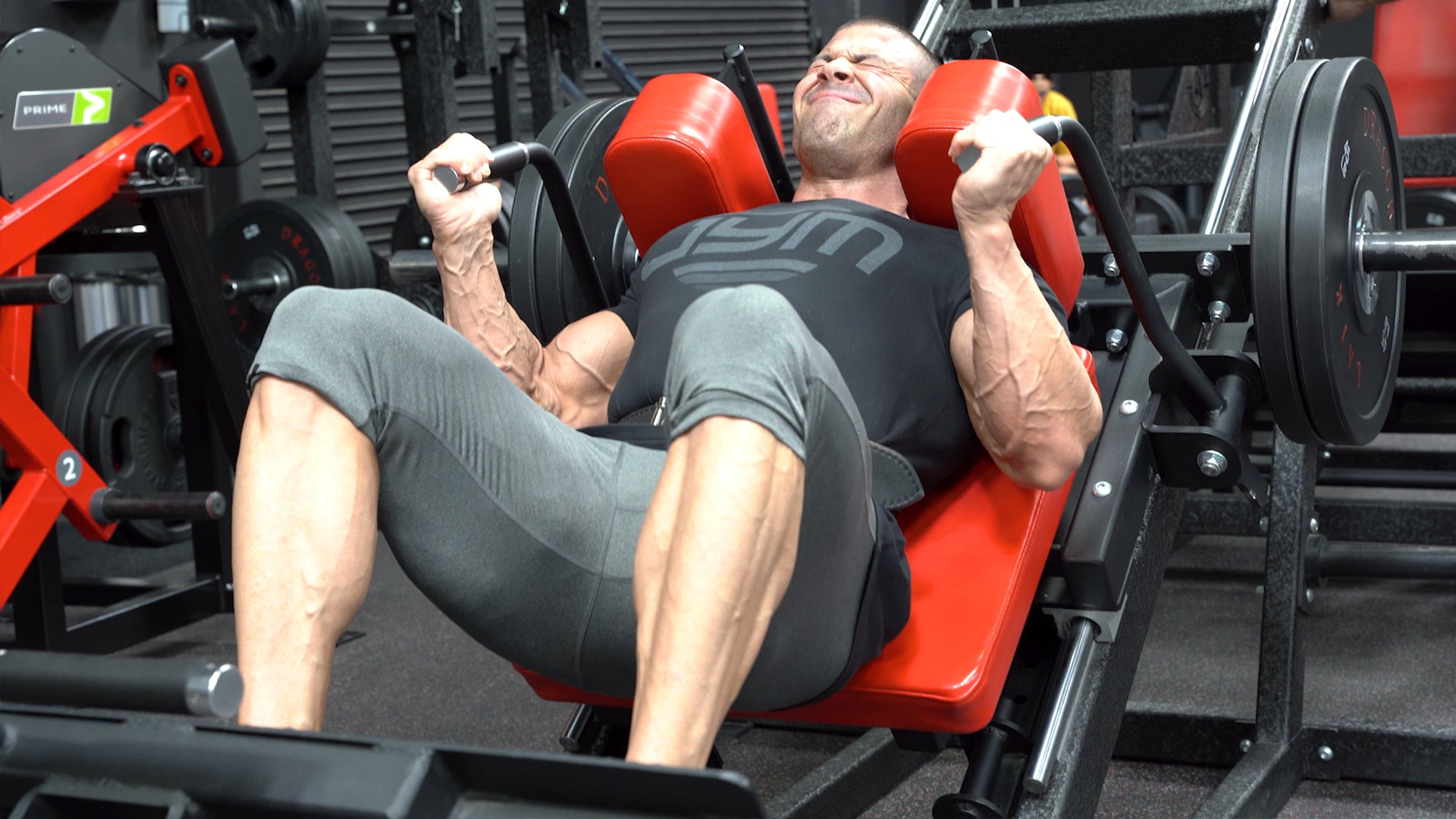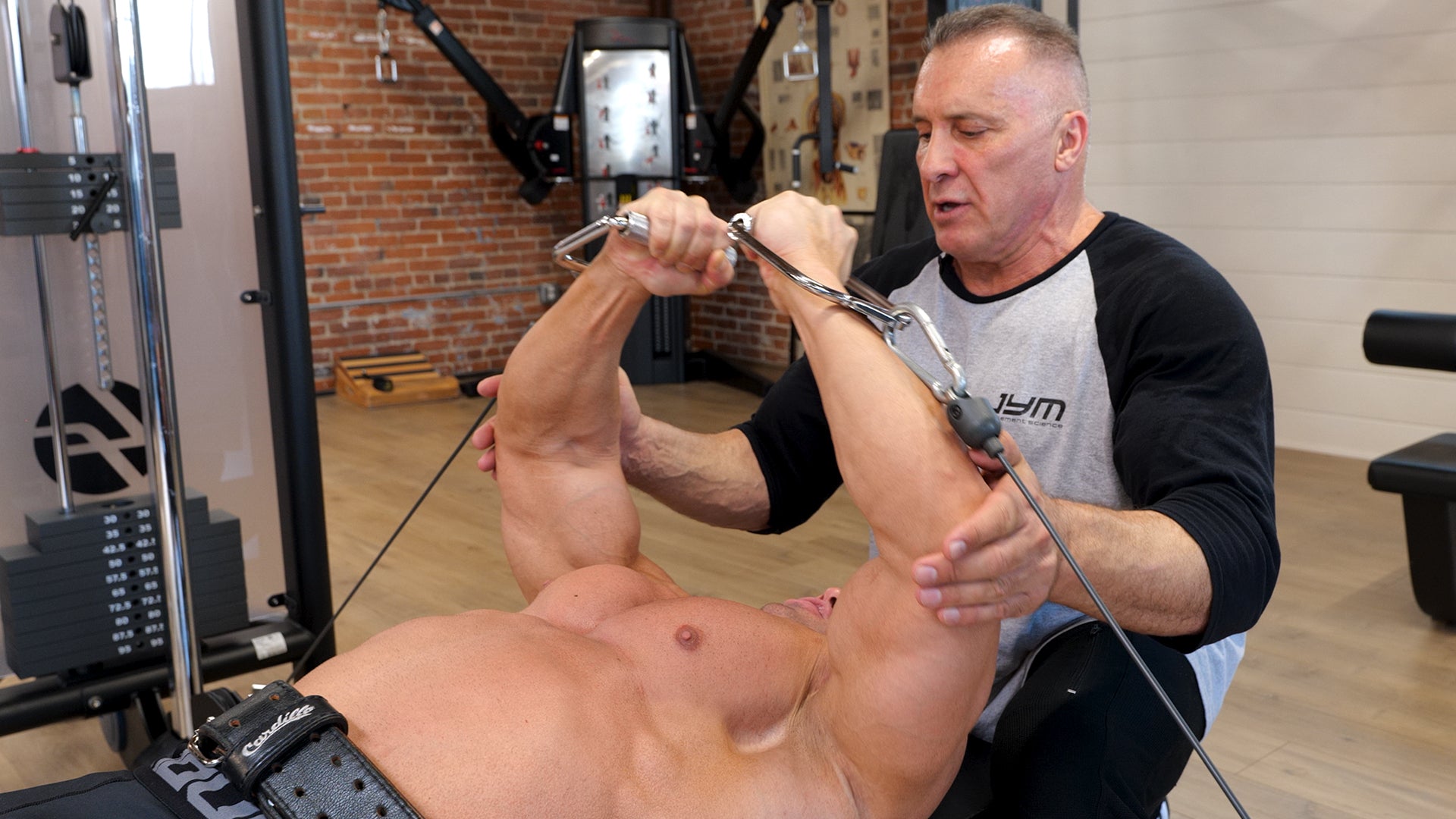Make a weak bodypart a jacked one with the pre-exhaust principle
We all have that muscle group that just… won’t… grow. You’ve tried everything – heavy weight, light weight, high reps, low reps, more volume, less volume, more intensity, new exercises – and still nothing. The bodypart won’t budge, damnit.
Well, there’s one training technique you likely haven’t tried, or at least you haven’t fully committed to it: pre-exhaustion (pre-exhaust for short) When a stubborn muscle won’t grow – expecially a big one like chest, back, quads, or delts – pre-exhaust can do the trick.
Milos “The Mind” Sarcev, creator of the Hyperemia Advantage Training System, is a huge fan and practitioner of pre-exhaustion; he uses it with all of his clients, professional bodybuilders and physique and figure athletes alike. In the below video he tells you why.
“I love pre-exhaust for making sure you get the most out of the targeted muscle group in a workout,” says Sarcev. “So often I see people training a particular muscle, and they tell me they can’t even feel the muscle working! If you can’t feel it working, it’s not growing. With pre-exhaustion, you’ll definitely feel that muscle, and it will grow!”
What is Pre-Exhaustion?
It’s a pretty simple concept, but one that most people either ignore or are unaware of due to longheld bodybuilding dogma that says big compound (multijoint) lifts should be done before smaller isolation (single-joint) moves. Pre-exhaust flips that order around so that you do one or more isolation exercises for a given muscle group before compound exercises.
That’s really all there is to it: isolation exercises before multijoint moves. For example, flyes before presses on chest day; lateral raises before shoulder presses for delts; straight-arm pulldowns before rows, pull-ups, and/or lat pulldowns for back; leg extensions before squats and lunges for legs.
How and Why Pre-Exhaustion Works
If you’re able to establish a strong mind-muscle connection with the target muscles on big compound exercises like bench press and squats, great. But a lot of people aren’t quite able to dial it in. When they do flat or incline presses, the triceps and shoulders do much of the work, which means the pecs (the target muscle group) aren’t getting maximum stimulation. On squats, the quads are working, but so are the glutes and hamstrings. With shoulder presses, again, the triceps are taking over. On back, it’s the biceps.
No wonder the bigger muscle groups often won’t grow – they’re not getting properly stimulated when you’re supposed to be training them. Chest, delt, and back workouts end up blasting the triceps and biceps. Quad day becomes glute day.
By starting with an isolation move for the bodypart, you’re making damn sure the target muscle takes the brunt of the load from the beginning of the workout and gets pre-exhausted before moving to the compound lifts. That way, when those secondary muscles start chiming in, it’s okay because the muscle you wanted to beat the hell out of (pecs, delts, lats, quads, etc) is already pretty well fried.
The Best Exercises for Pre-Exhaust
Here are some of the best exercises to use when pre-exhausting a large muscle group to maximize growth in that area:
Best Isolation Exercises for Chest
Do at least one of these before pressing moves:
- Dumbbell Flye
- Cable Crossover
- Pec Deck (aka Machine Flye)
Best Isolation Exercises for Shoulders
Do at least one of these before overhead pressing moves:
- Dumbbell Lateral Raise
- Cable Lateral Raise
- Machine Lateral Raise
Best Isolation Exercises for Back
Do at least one of these before rows, pulldown, and/or pull-ups:
- Straight-Arm Pulldown
- Dumbbell or Cable Pullback
- Machine Pullover
Best Isolation Exercises for Quads
Do at least one of these before squats, lunges, leg press, and/or hack squats:
- Leg Extension
- Sissy Squat
What About Pre-Exhaust for Smaller Muscle Groups?
Can you pre-exhaust the biceps or triceps if one of those muscle groups is lagging? You can, even though the notion of compound vs. isolation exercises doesn’t apply quite as well to these smaller body parts, especially biceps.
For biceps, pre-exhaust would mean doing your typical “finishing” moves like cable curls, machine curls, and concentration curls before heavy barbell and dumbbell curls.
With triceps, you actually have a couple of common multijoint exercises: close-grip bench press and dips. You can even throw skull crushers (aka lying triceps extensions) into the compound moves category for triceps, since you typically go heavier on that lift. To pre-exhaust the tri’s, then, do cable pressdowns, overhead extension, and/or kickbacks before those bigger moves.




